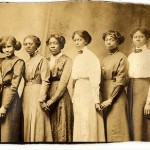This time of year, as we shop for others, or as we mull in self-satisfaction that we are not in the rush of holiday traffic, that we planned ahead and thoughtfully chose the perfect items for each person on our list before everyone else decided to panic– and I’m not telling you which of these applies to me– this time of year is a good time to reflect. As part of your winter reflection, spend a moment to give yourself props for the gifts that you have offered your students. I am, and I am realizing that many of these gifts are also what I hope that our leaders, communities and voters will give to teachers and students.
So here is my list. It is a list I submit to the world, hoping as a child hopes* that her chicken scratch will make it to the North Pole, that all teachers and students everywhere are gifted with the same.
1. Generous listening. This one is a challenge for me. I like to be the expert, even if it means making up information accidentally. However, over the years I have tried hard to become better at listening openly, because the more I listen to students, the better teacher I am. What I hear helps me meet my students where they are; sometimes all they need to be able to focus on the lesson that day is to download what is on their minds.
Listening with a generous spirit is a gift that would change many schools’ relationships with their communities. Leaders, put aside your theories, research and politics for a while and read the letters and e-mails from teachers. Look for the new information and solutions they have to offer; understand their realities. It may take a while for the stereotype of the grumpy lounge lizard teacher to be dispelled, but understand that teachers have been disregarded for so long that their cynical laments have become habit, and habits can be broken. I think those self-defensive attitudes would slither away after a while if teachers could trust the public to listen sincerely.
2. Time. When I have my students work on complex, multi-step projects, I feel obligated to build in time and scaffolding to help them be successful. Gone are the early teaching days when I would take them through a quick draft and have them type it on their own time “Due on Friday.” I expect independent work and time to be spent on the project at home, but I also understand that without that gift of time in class, even the most motivated students will not produce their best. And their best is what I’m after. For all the students, not just the ones who have a quiet desk and color printer at home.
Similarly, our schools need time. Our teachers need time. We are not automatons: Feed the standards in at one end and out the other comes a ticker tape of curriculum. And we also may not have a quiet nook at home in the evenings. Many districts and schools across the country have become more innovative about finding time for quality, teacher-led and teacher-determined professional development within the school day. However, sometimes other agendas compromise these efforts. My last school tried to be innovative about how they structured the school day in order to accommodate extra academic support for students as well as PD, and their proposals were shot down by the state department of education several times until they conformed to multiple technicalities. It seemed to be an exercise in submission more than true problem-solving, in the end. More school-level control of time, lower student loads and a good dose of teacher-discretion in how time is used at school would be wonderful gifts.
3. Responsiveness. If two-thirds of a class does not complete an assignment, I can choose how I respond to that. As a younger teacher (and in years when my student load was beyond ridiculous), I stuffed a lot of anger and frustration, assigned zeroes, and moved on. Now, as often as possible, my approach is different. I try to analyze why the students did not do the work, and then decide what to do about it. I make some allowances for late work that I can live with; I inconvenience students for not doing their homework, yet allow them to achieve the objectives of the assignment. Whether I allow more time or make them live with the zero all depends. It took me a long time to figure out that being flexible does not mean being a pushover.
The day is coming soon when policy will be more responsive to teacher voices. Many groups are working on the issue of teacher voice in many places. Sometimes these are outside groups inviting teachers in, but I predict that soon the more teacher-driven groups will vastly expand their impact on policy at levels beyond the school districts. The Arizona Teacher Solutions Team and the United States Department of Education RESPECT project both have produced documents that outline teachers’ visions for public schools and the education profession. The next step is to see more of these innovative ideas implemented (or at least made possible) by state legislatures, school boards, superintendents and voters. Creating a vibrant generation of teachers who have career choices will invigorate public schools and encourage teachers to stay in the profession. The gift of responsiveness is good for teaching and for students.
These gifts truly keep giving, rippling out into our communities. What other gifts do you offer your students? What gifts would be most valuable to our schools?
*However, I think we teachers have a better shot than my daughter’s letter.









